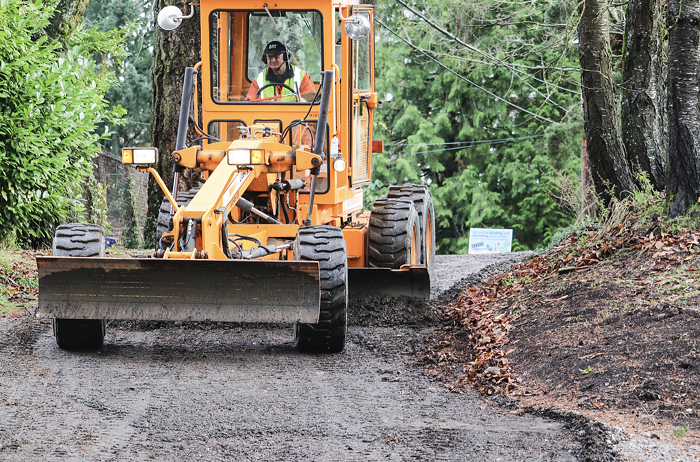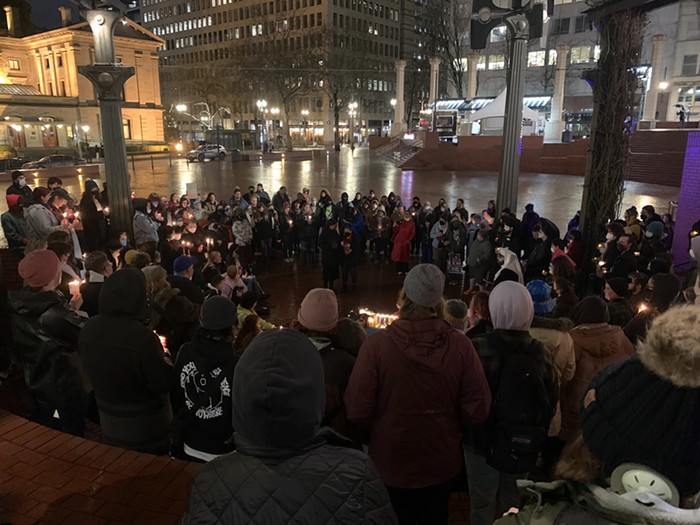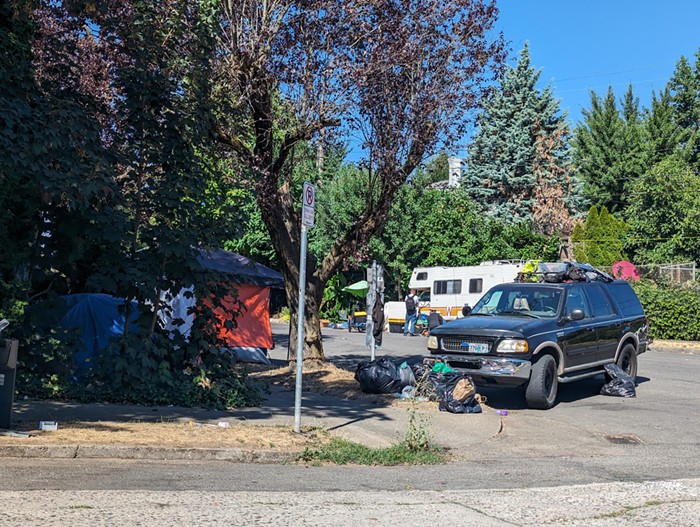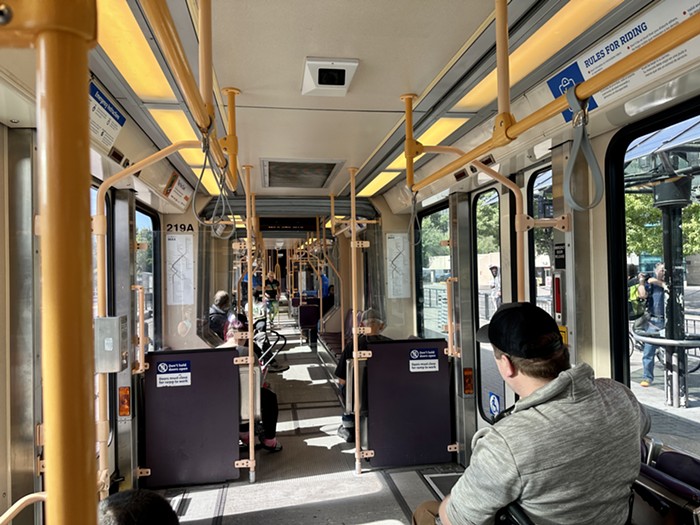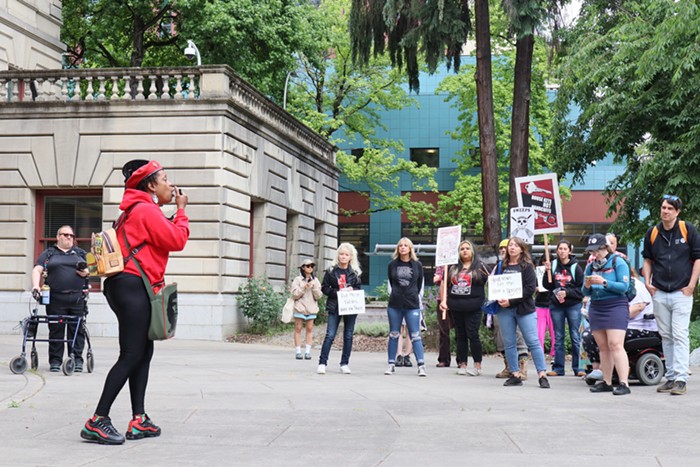THE DEBATE over the new plan for Old Town is a fight over nothing—literally. Empty space makes up 29 percent of the 20-block historic district, in the form of vacant surface parking lots. The hot issue for business owners, planners, and historical preservationists is whether new buildings on those lots should stick to strictly historical designs, or push for a more modern look.
The entire Old Town neighborhood is a national historic landmark, which means the National Park Service recognizes the 20 blocks around West Burnside as being of equal historical importance as places like Abraham Lincoln's log cabin.
Earlier this year, aiming to revitalize the area with new development, the city drafted a plan that allows for modern architecture and bigger, taller buildings in the district. In five key spots on the border of the historic blocks, buildings could be up to 130 feet tall.
"I have no knowledge of an architect who can make a 120-foot tower fit into a neighborhood that's made of two- to four-story Italianate buildings," says Art DeMuro, chairman of the city's Historical Landmarks Commission. In a very rare move, the commission unanimously voted to reject the plan, while the separate Planning Commission approved it. On November 12, a meeting on the plan ran four and a half hours long, as 40 Portlanders showed up to rant for or against the new height limits.
"We're saying, when you have a themed neighborhood like that, new development should reinforce those themes. That's what makes the neighborhood stronger," says DeMuro. Based on that idea, the Historical Landmarks Commission wrote up its own design guidelines for the area, encouraging new buildings to resemble the look and size of the old.
Pete Eggspuehler, of Beam Development, which has proposed a tall building for one of the five debated lots, thinks forcing new buildings to resemble the old Italianate styles will "leave us with a Disneyland-like historic district where visitors are left to wonder which is old and which is new."
However, the National Park Service seems to agree with DeMuro: In the fall, the organization wrote a letter saying the proposed height limits could open the door to the district losing its landmark status.
City Planner Karl Lisle, who helped draft the original plan, says the Park Service's letter definitely gave him pause, but he thinks allowing tall, modern buildings will bring needed money and people into Old Town. "We want it to be a district that's not all abandoned buildings and surface parking, but a district that's really alive," says Lisle.
The future face of Old Town is now up to city council to decide: The controversial plan goes to a vote on December 18.

